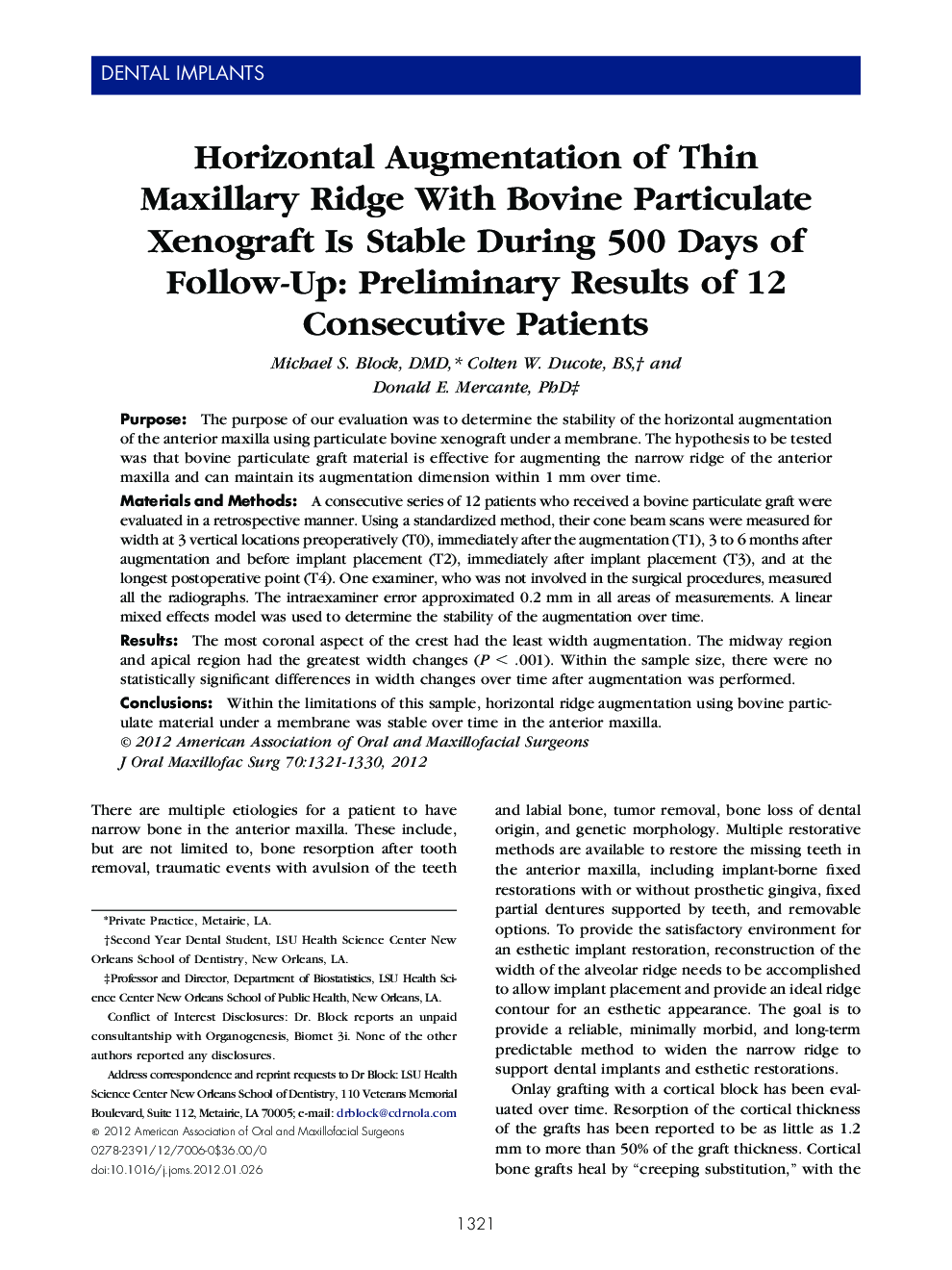| Article ID | Journal | Published Year | Pages | File Type |
|---|---|---|---|---|
| 3153088 | Journal of Oral and Maxillofacial Surgery | 2012 | 10 Pages |
PurposeThe purpose of our evaluation was to determine the stability of the horizontal augmentation of the anterior maxilla using particulate bovine xenograft under a membrane. The hypothesis to be tested was that bovine particulate graft material is effective for augmenting the narrow ridge of the anterior maxilla and can maintain its augmentation dimension within 1 mm over time.Materials and MethodsA consecutive series of 12 patients who received a bovine particulate graft were evaluated in a retrospective manner. Using a standardized method, their cone beam scans were measured for width at 3 vertical locations preoperatively (T0), immediately after the augmentation (T1), 3 to 6 months after augmentation and before implant placement (T2), immediately after implant placement (T3), and at the longest postoperative point (T4). One examiner, who was not involved in the surgical procedures, measured all the radiographs. The intraexaminer error approximated 0.2 mm in all areas of measurements. A linear mixed effects model was used to determine the stability of the augmentation over time.ResultsThe most coronal aspect of the crest had the least width augmentation. The midway region and apical region had the greatest width changes (P < .001). Within the sample size, there were no statistically significant differences in width changes over time after augmentation was performed.ConclusionsWithin the limitations of this sample, horizontal ridge augmentation using bovine particulate material under a membrane was stable over time in the anterior maxilla.
